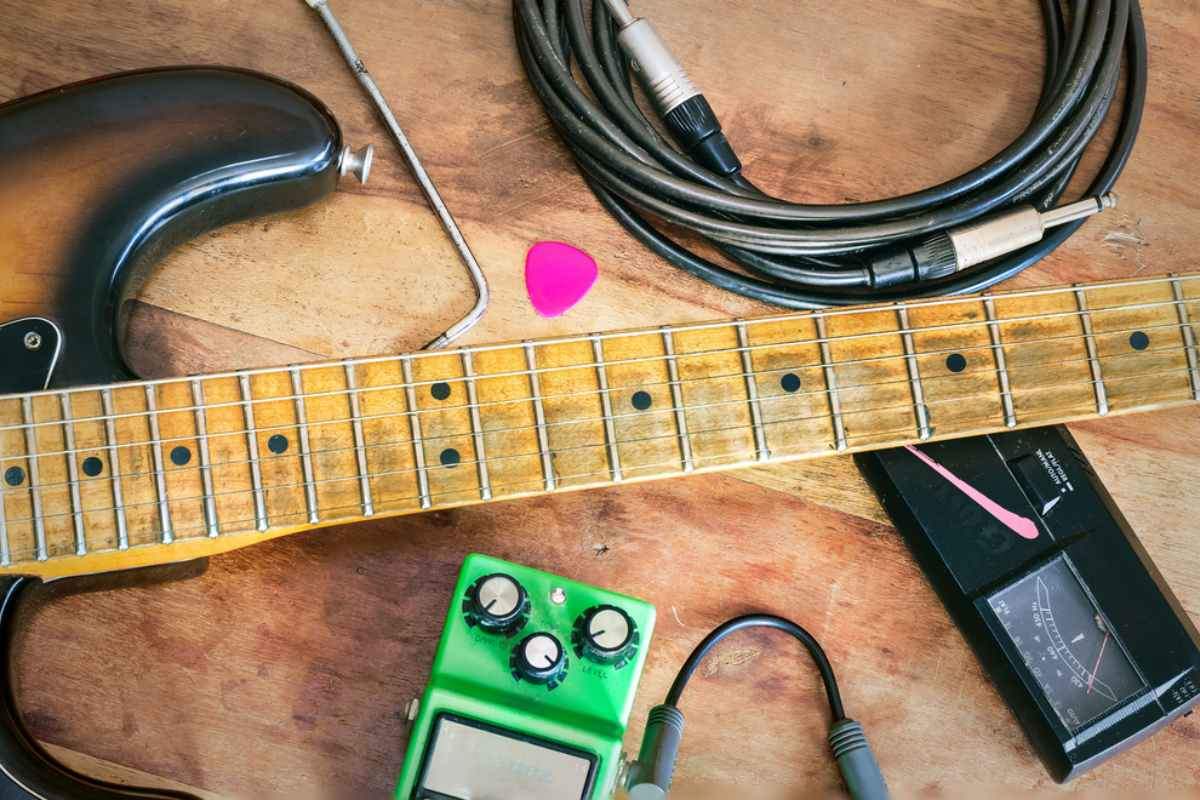Setting your guitar up properly to get the perfect action for your style of playing can turn an average instrument into one that you will love forever. We've talked about what difference does neck construction make to an electric guitar, now let's talk about what kind of problems guitar neck might occur. Although it’s not an easy task, it’s probably a lot easier than you think it is, so let’s get straight to it with…
How to sight a neck
Sighting a neck is exactly what you think it is, looking down the neck to see if there are any issues with it. Start by turning the guitar on its side (the same as if you were playing it), then close one eye and use the other to sight down the neck from behind the headstock. If the guitar has a fretboard glued onto the neck (which most do), you can use that line as a guide.
Then, with the guitar still on its side, position your head halfway along the length of the neck (above the 8th or 9th fret) and look down from above at the whole length of the neck using the low E-string as a guide.
The neck might be:
- Perfectly straight
- Have a slight relief - slightly curved down at the middle of the neck with the lower and higher frets ever so slightly closer to the strings, this is the ideal.
- Back bowed - the neck is slightly higher around the 8th and 9th frets than the lower and higher frets. The notes on the first few frets buzzing is often a sign of this. It is usually caused by either the truss rod being over-tightened, or changes in humidity.
- Bowed - the notes in the upper register of the neck buzzing or choking out is usually a sign of this. The usual cause is the truss rod being under-tightened.
- Or in the worst case, warped or twisted - if this is the case, I recommend a trip to your local quality luthier to ask his advice.
If you don’t trust your eyes for whatever reason, get yourself a notched straight edge. This is a special tool used by luthiers with cutouts that fit over the frets, which is used to highlight any neck problems.

How to fix a back-bowed neck
Usually, all that’s necessary is a slight loosening of the truss rod. If your guitar has a truss rod cover, remove it, then loosen the D and G strings so that they are not in the way. Next, using the correct size Allen key (usually 3/16ths or 1/8th of an inch, or 4mm or 5mm) turn the truss rod an eighth of a turn counter-clockwise twice (a quarter turn in full) and tighten the D and G strings until they are back in tune.
Now check to see if the neck is straighter, if it is, but still not perfect, give the truss rod another eighth of a turn (or two) to see if that solves the issue. If it is worse, you are turning the truss rod the wrong way.
Although the notes on the first few frets are now crystal clear, you may notice that the strings higher up the neck are now further away from the fretboard, i.e., the action is worse than before. Don’t worry about this, the truss rod is not a tool to get the perfect action, it is a tool for getting the perfect neck relief so that you can then set your bridge to get the action you want.
Your guitar’s neck should now be in great shape (slight relief), so it’s time to adjust the bridge, either the height of the entire bridge and/or the height of each saddle to get you the action you want. If you are still having minor issues, make another slight adjustment to the truss rod and then set the bridge up again. There may be a little back and forth necessary between truss rod adjustment and bridge adjustment to get the perfect set-up depending on how out of shape your neck was in the first place.

How does string guage and different tunings affect a guitar's neck?
This will depend on how severe the changes are, if you normally use a set of 9 gauge strings and then go to a set of 10s, you might get away with it and not need to make any changes. Or, if you want to play some folk using DADGAD instead of standard tuning, you won’t have an issue.
However, if you suddenly decide that you want to play the guitar dropped down two whole tones to C with much thicker strings than you currently use, then you will have to make some serious neck adjustment guitar to both your truss rod and the bridge.
How to fix a bowed neck
This involves tightening the truss rod to pull the neck back into shape. Before you start, loosen all the strings to lower the tension on the neck, and again move the D and G strings out of the way of the truss rod.
Then remove the truss rod cover, if it has one. Now, using the correct Allen Key (using the wrong one could damage the end of the truss rod) turn the truss rod clockwise an eight of a turn twice. Next, tighten and re-tune the strings to see how much difference the adjustment made.
Your neck should now be straighter, if it is still slightly bowed, repeat the process - loosen the strings - turn the truss rod clockwise an eighth of a turn, and re-tune. Once you get the neck straight, loosen the truss rod (counter-clockwise) an eight of a turn to give the neck a little relief which will aid with set-up.
Even though this adjustment has sorted out your neck issues, you might now find that the strings are incredibly close or even lying flat on the fretboard. Again, don’t worry, this is all part of the process and you now need to adjust your bridge (by raising it) to get the action you want. As was the case with a back-bowed neck, there may be some back and forth involved with slight truss rod adjustments and slight bridge adjustments to get the action exactly as you want it.

Wrapping it up
So, that’s it for this guide to adjusting electric guitar necks. You should now know how to adjust a guitar neck regardless of what problem it has. Give it a go, but remember to take your time, use the correct Allen Key, and make very small adjustments (an eighth of a turn at a time) to ensure that you don’t damage the truss rod or your guitar. The very best of luck.
If you like this article, please share it!
Be sure to join our FB Group Guyker Guitar Parts & Accessories Community to share your ideas! You can also have connections with like-minded guitar players, Guyker updates as well as discounts information from our FB Group.




